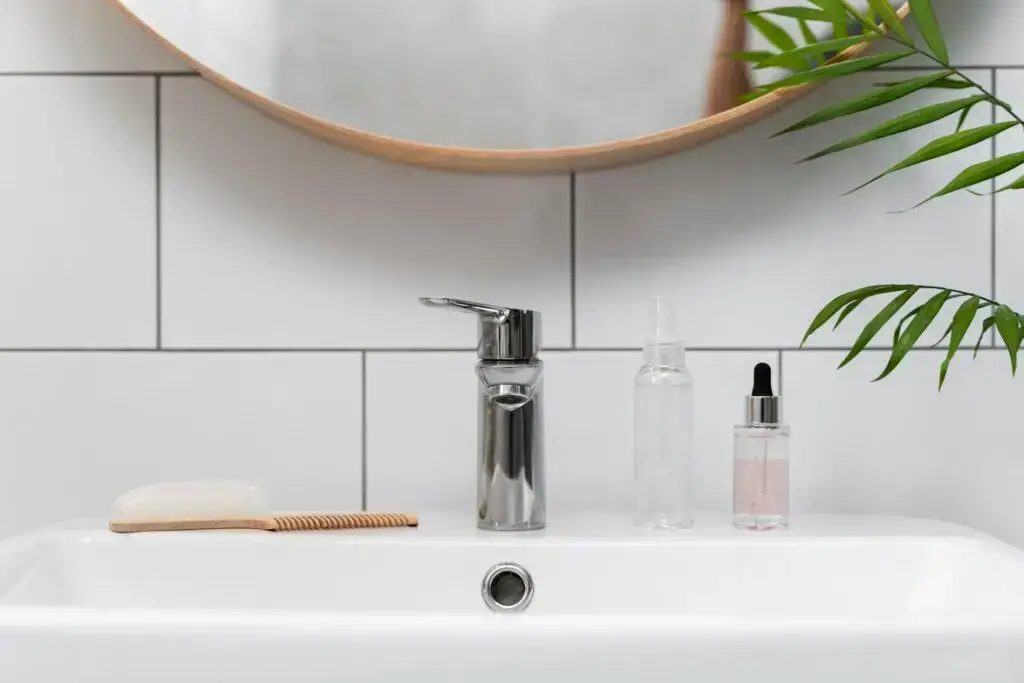The Hidden Purpose Behind That Small Hole in Your Sink
Discover the ingenious engineering feature that prevents bathroom disasters and learn how to maintain it properly
The Mystery Hole That Saves Your Home
Walk into any bathroom and take a close look at the sink. You’ll notice a small, seemingly insignificant opening positioned about one-third of the way up from the basin’s bottom. This modest feature, often overlooked by homeowners, represents one of the most practical examples of preventive engineering found in modern plumbing design.
While this small aperture might appear to be nothing more than a decorative element or manufacturing quirk, it serves a crucial protective function that could save you from costly water damage and expensive repairs. Understanding its purpose and proper maintenance can help you appreciate the thoughtful design elements that make modern homes both functional and safe.
Engineering Excellence: The Overflow Prevention System
How the Overflow Mechanism Works
The small hole in your sink, known professionally as an overflow drain or overflow port, operates on a simple yet brilliant principle of hydraulic engineering. This secondary drainage system connects directly to the main drain pipe through internal channels within the sink’s structure, creating a backup route for excess water.
When water levels rise beyond the overflow port’s position, gravity naturally directs the excess liquid into this secondary channel. The water then flows through internal passages that merge with the primary drainage system, effectively preventing the basin from overflowing onto your bathroom floor.
This design feature represents centuries of plumbing evolution, addressing one of the most common household accidents: unattended running water. Whether you’re brushing your teeth, washing your face, or simply distracted by daily activities, the overflow system provides constant protection against flooding.
The Science Behind Strategic Placement
The positioning of overflow drains follows specific engineering principles that maximize effectiveness while maintaining aesthetic appeal. Placed approximately one-third up from the basin bottom, this location provides optimal protection while ensuring the sink retains adequate water capacity for normal use.
This strategic placement creates a safety margin that accommodates various water flow rates and usage patterns. Even high-pressure faucets or partially blocked main drains cannot overwhelm the overflow system when it’s functioning properly, making it an essential component of bathroom safety infrastructure.
Historical Development and Modern Applications
Evolution of Sink Design
The concept of overflow protection evolved alongside indoor plumbing systems throughout the 19th and 20th centuries. Early sinks lacked this feature, leading to frequent flooding incidents that damaged floors, walls, and personal property. As bathroom fixtures became more sophisticated, manufacturers incorporated overflow systems as standard safety features.
Modern sink designs have refined this concept further, integrating overflow systems seamlessly into the overall aesthetic while improving functionality. Contemporary overflow drains often feature smooth, finished edges that complement the sink’s design while maintaining full protective capability.
Regulatory Standards and Building Codes
Many building codes now require overflow protection in bathroom sinks, particularly in commercial and multi-family residential buildings. These regulations recognize the overflow system’s role in preventing water damage and maintaining building safety standards.
Professional plumbers and contractors understand the importance of proper overflow installation and regularly inspect these systems during routine maintenance visits. Building inspectors also verify overflow functionality as part of standard plumbing inspections.
The Hidden Challenge: Maintenance and Hygiene
Why Overflow Drains Require Special Attention
Despite their protective benefits, overflow drains present unique maintenance challenges that many homeowners overlook. The positioning and design of these systems create conditions that can harbor bacteria, mold, and mineral deposits, leading to unpleasant odors and potential health concerns.
The internal channels of overflow systems experience slower water flow compared to main drains, allowing organic matter and soap residue to accumulate over time. This stagnant environment provides ideal conditions for bacterial growth and biofilm formation, which can produce persistent odors that seem to emanate from nowhere.
Additionally, the complex internal geometry of overflow systems makes them difficult to clean using conventional methods, requiring specialized approaches to maintain proper hygiene and functionality.
Common Problems and Warning Signs
Several indicators suggest that your sink’s overflow system requires attention:
Persistent Odors: Musty or sewage-like smells coming from the sink area, particularly near the overflow opening, indicate bacterial buildup within the system.
Slow Overflow Response: If water backs up despite the overflow drain’s presence, mineral deposits or debris may be blocking internal channels.
Visible Discoloration: Dark stains or mineral buildup around the overflow opening suggest that cleaning is overdue.
Gurgling Sounds: Unusual noises during drainage can indicate air trapped within the overflow system due to partial blockages.
Professional Cleaning and Maintenance Techniques
The Vinegar and Baking Soda Method
One of the most effective and environmentally friendly approaches to overflow drain maintenance involves using common household materials. The chemical reaction between vinegar and baking soda creates a powerful cleaning action that dissolves organic buildup and neutralizes odor-causing bacteria.
Step-by-Step Process:
- Preparation: Remove any visible debris from the overflow opening using a small brush or cloth.
- Baking Soda Application: Pour approximately two tablespoons of baking soda directly into the overflow hole, ensuring it enters the internal channels.
- Vinegar Addition: Slowly add white vinegar to the overflow opening, creating an immediate fizzing reaction that indicates the cleaning process has begun.
- Reaction Time: Allow the mixture to work for 10-15 minutes, giving the chemical reaction time to break down accumulated deposits and kill bacteria.
- Flushing: Run warm water at moderate pressure to flush the loosened debris through the system and restore proper flow.
Advanced Cleaning Techniques
For more stubborn buildups or persistent odors, additional cleaning methods may be necessary:
Enzyme Cleaners: Specialized enzyme-based drain cleaners can break down organic matter more effectively than traditional chemical cleaners, making them particularly useful for overflow systems.
Mechanical Cleaning: Flexible cleaning tools designed for small drainage systems can physically remove accumulated debris from overflow channels.
Professional Service: Persistent problems may require professional plumbing intervention to fully restore overflow system functionality.
Preventive Maintenance Strategies
Regular Inspection and Care
Implementing a regular maintenance schedule prevents most overflow system problems before they become serious issues. Monthly visual inspections can identify early warning signs, while quarterly cleaning prevents significant buildup.
Monthly Tasks:
- Visual inspection of the overflow opening for discoloration or debris
- Odor assessment to detect early bacterial growth
- Function testing by allowing water to reach overflow level
Quarterly Tasks:
- Complete cleaning using vinegar and baking soda method
- Inspection of main drain function to ensure proper system integration
- Assessment of water flow patterns during normal use
Water Quality Considerations
Local water quality significantly impacts overflow system maintenance requirements. Hard water areas experience more mineral buildup, requiring more frequent cleaning cycles. Areas with high organic content in water supplies may see faster bacterial growth within overflow systems.
Understanding your local water conditions helps establish appropriate maintenance schedules and cleaning frequencies. Water treatment systems can reduce mineral content and organic matter, extending time between required cleanings.
Modern Innovations and Future Developments
Contemporary Design Improvements
Recent advances in sink design have addressed many traditional overflow system challenges. Modern overflow designs feature smoother internal surfaces that resist bacterial growth and easier-to-clean configurations that improve maintenance accessibility.
Some manufacturers now offer antimicrobial coatings for overflow systems, reducing bacterial growth and extending time between required cleanings. These innovations represent ongoing efforts to improve both functionality and hygiene in bathroom fixtures.
Smart Plumbing Integration
Emerging smart home technologies include overflow monitoring systems that alert homeowners to potential problems before they become serious issues. These systems can detect unusual flow patterns, excessive buildup, or system blockages, enabling proactive maintenance.
Future developments may include self-cleaning overflow systems that automatically flush cleaning solutions through internal channels, maintaining optimal hygiene without manual intervention.
Economic Impact and Value Protection
Preventing Costly Water Damage
The overflow system’s primary function—preventing bathroom flooding—protects homeowners from potentially devastating financial losses. Water damage from sink overflow can affect flooring, walls, electrical systems, and personal property, with repair costs often reaching thousands of dollars.
Insurance claims related to water damage frequently exclude coverage for preventable incidents, making overflow protection systems valuable investments in property protection. The minimal cost of proper maintenance pales in comparison to potential flood damage expenses.
Property Value Considerations
Well-maintained plumbing systems, including properly functioning overflow drains, contribute to overall property value and marketability. Home inspectors routinely check overflow system functionality, and problems in this area can negatively impact sale negotiations.
Regular maintenance documentation can demonstrate responsible homeownership and provide confidence to potential buyers about the property’s overall condition and care.
Health and Safety Implications
Indoor Air Quality Protection
Properly maintained overflow systems contribute to healthy indoor air quality by preventing mold growth and bacterial proliferation that can affect respiratory health. Neglected overflow drains can become sources of airborne contaminants that impact family health and comfort.
The enclosed nature of overflow systems means that problems can develop unnoticed until they become severe, making regular maintenance essential for maintaining healthy living environments.
Preventing Structural Damage
Beyond immediate flooding concerns, overflow systems protect structural elements from water damage that can compromise building integrity. Repeated exposure to excess water can damage subflooring, wall materials, and support structures, leading to expensive structural repairs.
The overflow system’s protective function extends throughout the building’s lifespan, making it one of the most cost-effective safety features in modern construction.
Conclusion: Appreciating Hidden Engineering
The small hole in your sink represents the thoughtful engineering that makes modern life safer and more convenient. This seemingly insignificant feature prevents disasters, protects property values, and maintains healthy living environments when properly maintained.
Understanding the overflow system’s function and maintenance requirements empowers homeowners to protect their investments while ensuring continued safety and comfort. Regular attention to this hidden feature prevents problems before they develop into expensive disasters.
The next time you notice that small opening in your bathroom sink, appreciate the centuries of engineering evolution it represents and the ongoing protection it provides. With proper care and understanding, this modest feature will continue serving your home reliably for years to come, proving that sometimes the most important innovations are the ones we notice least.
Simple maintenance and regular attention to your sink’s overflow system ensure continued protection and optimal performance, making it one of the most valuable features in your bathroom’s safety infrastructure.

Ethan Blake is a skilled Creative Content Specialist with a talent for crafting engaging and thought-provoking narratives. With a strong background in storytelling and digital content creation, Ethan brings a unique perspective to his role at TheArchivists, where he curates and produces captivating content for a global audience.
Ethan holds a degree in Communications from Zurich University, where he developed his expertise in storytelling, media strategy, and audience engagement. Known for his ability to blend creativity with analytical precision, he excels at creating content that not only entertains but also connects deeply with readers.
At TheArchivists, Ethan specializes in uncovering compelling stories that reflect a wide range of human experiences. His work is celebrated for its authenticity, creativity, and ability to spark meaningful conversations, earning him recognition among peers and readers alike.
Passionate about the art of storytelling, Ethan enjoys exploring themes of culture, history, and personal growth, aiming to inspire and inform with every piece he creates. Dedicated to making a lasting impact, Ethan continues to push boundaries in the ever-evolving world of digital content.
